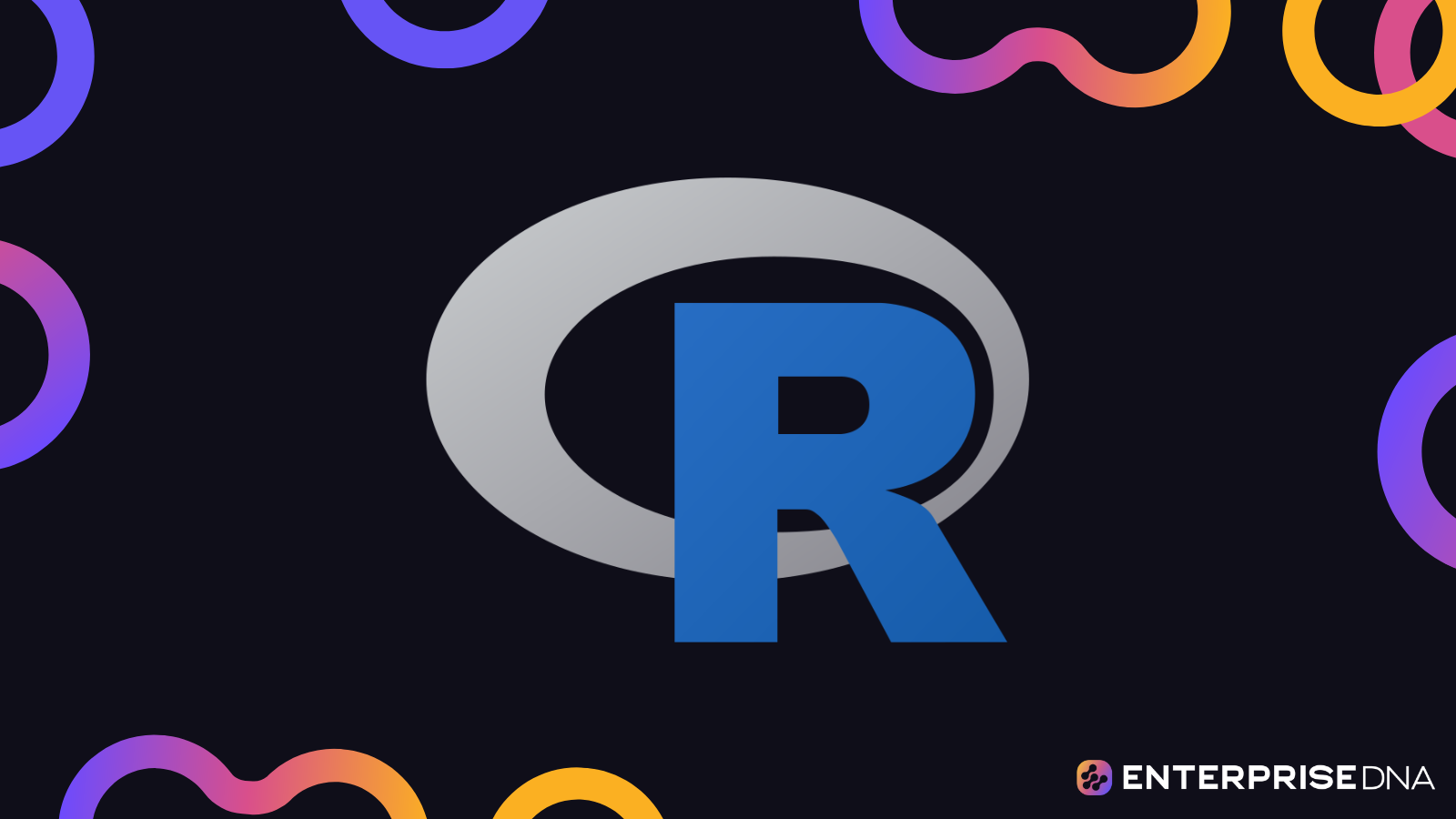Building Data Pipelines in R: A Comprehensive Guide
Introduction
Creating data pipelines in R involves a structured process of data ingestion, transformation, and output. This approach ensures data is processed efficiently and can be reused. The dplyr and magrittr packages are commonly used for this purpose due to their powerful and easy-to-read syntax.
Key Components of Data Pipelines
- Data Ingestion
- Data Transformation
- Data Output
Tools and Packages
dplyr: For data manipulation and transformation.magrittr: For piping (%>%) operator.readr: For reading data from various formats.tidyr: For tidying data.
Steps to Create a Data Pipeline
1. Data Ingestion
Utilize the readr package to read data from different sources such as CSV files, databases, or APIs.
2. Data Transformation
Use the dplyr package for data manipulation. Pipelines allow you to chain commands, making your code more readable.
3. Data Output
Write the transformed data to a file or a database using write_csv from the readr package or database connection functions from DBI.
Example: Complete Pipeline
Here is a complete example of how you might put everything together:
Best Practices
- Modularize Code: Break down your pipeline into functions for reusability and readability.
- Error Handling: Include error handling to manage unexpected data issues.
- Documentation: Add comments and document each step to make the pipeline easy to understand.
- Optimization: Test performance and optimize code where possible.
Advanced Techniques
- Parallel Processing: Use packages like
foreachanddoParallelfor parallel processing in large datasets. - Database Integration: Integrate with databases using packages such as
DBIandRPostgreSQL. - Visualization: Enhance data insights with visualization using
ggplot2.
Conclusion
Creating data pipelines in R is a powerful way to automate and streamline your data processing tasks. By using the tools and techniques outlined above, you can handle complex data transformations and ensure your data flow is efficient and maintainable. For more advanced techniques and learning, consider leveraging resources available on the Enterprise DNA platform.
For tailored tutorials and comprehensive courses on data manipulation and pipeline creation, I recommend exploring the Enterprise DNA platform.
Hybrid Data Transformation: SQL vs R Analysis
Pros and Cons of SQL-Based Data Transformation
Advantages
Performance:
- SQL engines are optimized for data manipulation and can handle large datasets more efficiently.
- Operations are executed closer to the storage, reducing data transfer overhead.
Scalability:
- SQL databases like PostgreSQL, MySQL, and SQL Server are designed to manage large-scale data.
- They provide built-in query optimization and indexing which can speed up data transformations.
Security & Compliance:
- Centralized data management with better control over data access and auditing.
- Adheres to security protocols and compliance standards more strictly.
Disadvantages
Complexity:
- Complex transformations might require advanced SQL knowledge.
- SQL scripts can become unwieldy and hard to maintain for extensive transformations.
Flexibility:
- SQL syntax may limit the type of transformations that can be performed.
- Complex statistical or mathematical computations are difficult to implement.
Pros and Cons of R-Based Data Transformation
Advantages
Flexibility:
- R provides extensive packages (
dplyr,data.table,tidyr) for versatile data manipulation. - Easier integration with advanced statistical and machine learning models.
- R provides extensive packages (
Development Speed:
- Faster prototyping and interactive data exploration with immediate feedback.
- User-friendly syntax with expressive and readable code using the
tidyverseecosystem.
Integration:
- Seamless integration with data visualization packages like
ggplot2. - Facilitates end-to-end analytics within a single environment.
- Seamless integration with data visualization packages like
Disadvantages
Performance:
- Not inherently optimized for large datasets compared to SQL databases.
- Can suffer from memory limitations while handling large-scale data.
Scalability:
- Less effective when dealing with very large datasets without additional optimization.
- May require additional tools (e.g., parallel processing libraries) to scale effectively.
Recommended Approach
Hybrid Strategy
A hybrid approach often provides the best of both worlds:
Preliminary Transformation in SQL:
- Perform bulk data processing and initial filtering at the database level.
- Execute operations like joins, aggregations, and filtering, taking advantage of the database’s performance.
Advanced Processing in R:
- Load the preprocessed data into R for further transformation, statistical analysis, and visualization.
- Use R for tasks requiring advanced analytics, machine learning, and custom statistical computations.
By leveraging the strengths of both SQL and R, you can create an efficient, scalable, and flexible data processing pipeline.
Example Workflow
Conclusion
Both SQL and R have their place in data transformation and engineering. Using SQL for initial data transformation leverages the database’s strengths in handling large datasets efficiently. Subsequent processing in R takes advantage of R’s flexibility and integration capabilities, ensuring a comprehensive and effective data analysis workflow. This hybrid approach balances performance, scalability, and analytical flexibility. For more advanced techniques and in-depth learning, consider exploring the Enterprise DNA Platform courses.
R vs. SQL: Choosing the Right Tool for Data Transformation
Using R vs. SQL for Data Transformation
Both R and SQL have their strengths and appropriate use cases. However, there are certain scenarios where R provides distinct advantages over SQL. Below are some key points where R can excel compared to SQL:
Advanced Data Manipulation and Analysis
R excels in performing complex data manipulations and advanced analytics.
1. Complex Data Manipulation:
R provides a rich set of libraries (e.g., dplyr, tidyr) for complex data manipulation, which can be cumbersome in SQL.
2. Statistical Analysis:
R is designed for statistical analysis and includes a wide range of packages (like stats, lm, lme4) that make complex statistical computations straightforward.
Visualization
R offers powerful tools for data visualization through packages like ggplot2 that provide more flexibility and sophistication compared to SQL.
Machine Learning and AI
R has a comprehensive ecosystem for machine learning and AI through packages like caret, randomForest, and e1071. This makes R better suited for predictive modeling compared to SQL.
Custom Functions and Extensibility
R allows users to write custom functions with ease, extending the functionality of built-in operations, which can be more laborious in SQL.
Integration with Other Analytical Tools
R integrates seamlessly with other data analysis tools and frameworks, offering a broader flexibility. Through packages like reticulate, R users can also leverage Python libraries.
Conclusion
While both R and SQL have their distinct advantages, R is often better suited for:
- Complex data manipulations
- Advanced statistical analysis
- Sophisticated data visualizations
- Machine learning and AI tasks
- Writing custom functions
- Integrating with other analytical tools
For specific use cases, leveraging R can lead to more efficient, flexible, and powerful data analysis workflows. If you are looking to deepen your R skills further, exploring the courses on the Enterprise DNA platform can be highly beneficial.
Predicting Customer Churn Using Random Forest in R
Certainly. Here, we will explore an advanced example where R excels in applying a machine learning algorithm for a dataset—something that is not feasible using SQL alone.
Advanced Machine Learning Example in R
Problem Statement
You have a dataset containing customer information and want to predict customer churn using a Random Forest model. We’ll use the randomForest package in R to achieve this.
Dataset
Assume we have a dataset customer_data.csv with the following columns:
customer_idageincomesubscription_durationis_activechurn(response variable: 1 if churned, 0 if not)
Steps to Follow
- Load and Prepare the Data
- Train and Evaluate the Machine Learning Model
- Predict Using the Model
Step 1: Load and Prepare the Data
Step 2: Train and Evaluate the Machine Learning Model
Step 3: Predict Using the Model
Explanation
- Data Preparation: In this part, we loaded the dataset and split it into training and testing sets.
- Model Training: Using the
randomForestpackage, we trained a Random Forest model using selected features to predict thechurnresponse variable. - Evaluation: The model’s performance was evaluated using the confusion matrix, showcasing the precision, recall, and accuracy metrics.
- Prediction: Finally, the trained model was used to predict new examples to demonstrate its practical utility.
Why SQL Alone is Insufficient
SQL is a powerful language for querying and manipulating structured data, but it lacks robust built-in capabilities for advanced statistical analysis and machine learning tasks. Tasks such as model training, evaluation, and complex predictions, as shown above, are not possible in SQL without extensive use of external tools or libraries.
Conclusion
R, with its rich ecosystem of packages for statistical analysis and machine learning, provides an advanced and flexible environment to solve complex data problems that are not feasible with SQL alone. This example demonstrates the ease and power of building a predictive model in R. For further learning, consider exploring courses available on the Enterprise DNA Platform.
Advanced Time Series Forecasting with R
Real-world Example: Time Series Forecasting with Feature Engineering in R
Time series forecasting often requires extensive feature engineering and advanced statistical modeling, tasks that can be complex and challenging to perform using SQL alone. Below, we demonstrate how R can be used for advanced data augmentation in the context of time series forecasting.
Objective
To forecast sales data using time series analysis and feature engineering techniques.
Steps Involved
- Data Ingestion and Preparation
- Feature Engineering
- Model Training
- Forecasting and Evaluation
1. Data Ingestion and Preparation
Load the necessary libraries and ingest the sales data.
2. Feature Engineering
Create new features to capture patterns and seasonality in the data which are typically not feasible using SQL.
Example Features:
- Date-Based Features: Day of the week, month, year, etc.
- Lag Variables: Previous days’ sales to capture temporal dependencies.
- Rolling Statistics: Moving averages and standard deviations.
3. Model Training
Utilize advanced modeling techniques such as ARIMA or machine learning models to train on the engineered features.
4. Forecasting and Evaluation
Generate forecasts using the trained model and evaluate its performance.
Conclusion
In this example, R demonstrates its strengths in feature engineering, creating complex lag variables, rolling statistics, and fitting advanced modeling techniques like ARIMA. Such tasks go beyond SQL’s capabilities, showcasing R as a more versatile tool for advanced time series forecasting.
For more detailed learning and advanced topics in data analysis, consider exploring courses on the Enterprise DNA Platform.








